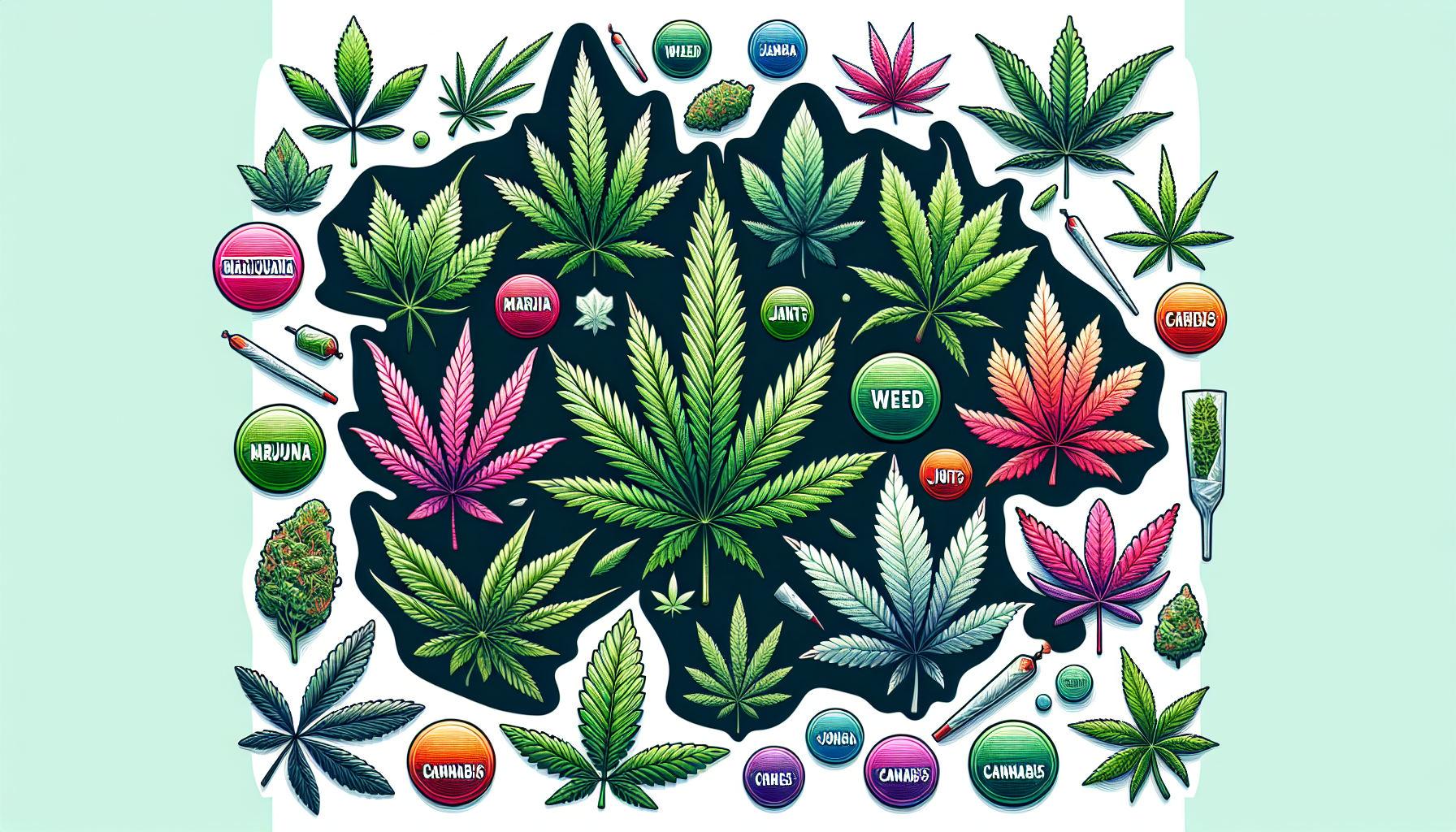What is the Difference Between Marijuana, Weed, or Cannabis?

Understanding the differences between marijuana, weed, and cannabis is crucial for anyone interested in the world of cannabis cultivation. Each term carries its own significance and can impact your choices as you navigate through purchasing autoflowering and feminized cannabis seeds. This article will help you differentiate between these terms and provide insights into the unique features, flavor profiles, and cultivation experiences associated with each.
Introduction
Understanding the differences between marijuana, weed, and cannabis is crucial for anyone interested in the world of cannabis cultivation. Each term carries its own significance and can impact your choices as you navigate through purchasing autoflowering and feminized cannabis seeds. In this article, we will briefly introduce the topic and highlight the importance of understanding the difference between these terms. Original Johnny Seed Bank offers a wide variety of high-quality cannabis seeds for various preferences and needs, ensuring that you have access to the best strains for your cultivation journey.
Understanding the Terminology
It’s essential to recognize that marijuana, weed, and cannabis are often used interchangeably to refer to the same plant: Cannabis sativa. This can create confusion when discussing various aspects of the plant, such as its cultivation, usage, and legality. By understanding the difference between these terms, you’ll be better equipped to navigate the world of cannabis, make informed decisions when purchasing seeds, and engage in discussions with fellow enthusiasts. So, let’s delve deeper into these terms and their implications in the ever-evolving cannabis landscape.
Cannabis: The Plant Species
The Cannabis sativa plant has a rich history and plays a significant role in various industries, from medicinal applications to recreational use and industrial production. Originating from Central Asia, the plant has two primary subspecies: Cannabis sativa and Cannabis indica. While both subspecies share some common characteristics, they are distinct in their growth patterns, chemical compositions, and effects on users.
Cannabis has a wide range of applications, making it a versatile plant species. Some of its uses include medicinal purposes, where cannabis-derived compounds like CBD and THC are utilized for their potential therapeutic benefits. Recreational use of cannabis, often referred to as marijuana or weed, involves consuming the plant’s flowers and other parts to experience the psychoactive effects caused by the presence of THC. Additionally, the plant is used in industrial applications, with its fibrous stalks being a valuable resource for creating textiles, paper, and building materials. As you explore the world of cannabis, understanding the plant species and its various uses will enable you to make informed decisions when selecting and cultivating cannabis seeds.
Marijuana: The Psychoactive Drug
When referring to the psychoactive drug derived from the Cannabis sativa plant, the term “marijuana” is often used. Marijuana consists of the dried flowers, leaves, stems, and seeds of the plant, all of which contain the psychoactive compound THC (tetrahydrocannabinol). As the primary compound responsible for marijuana’s psychoactive effects, THC levels play a crucial role in determining the user’s experience.
It is important to note that different marijuana strains can have varying levels of THC, leading to a wide range of experiences for users. Some strains may have a higher THC content, resulting in more potent psychoactive effects, while others might have a lower THC concentration, offering a milder experience. This diversity in THC levels allows users to choose strains that cater to their specific preferences and needs.
There are several methods of consuming marijuana, each providing a unique experience for the user. Some common methods include smoking, where the plant material is burned and the resulting smoke is inhaled; vaping, where the marijuana is heated to a temperature that releases the THC in the form of vapor without combustion; and ingesting edibles, which are food products infused with THC. By understanding the different methods of consumption and their effects, you can make informed decisions when purchasing and using marijuana products.
Weed: The Slang Term
It’s important to note that “weed” is simply a slang term for marijuana, carrying the same meaning and usage as the term marijuana itself. While the word “weed” might evoke a more casual and informal tone, it still refers to the same psychoactive drug derived from the Cannabis sativa plant. When discussing cannabis and its various strains, uses, and effects, understanding that the term “weed” is interchangeable with “marijuana” will help ensure clear communication and understanding in conversations with fellow enthusiasts and cultivators.
Hemp: The Non-Psychoactive Variety
While marijuana is known for its psychoactive properties, there is another variety of Cannabis sativa that boasts a range of uses without the intoxicating effects. Hemp, a non-psychoactive variety of the cannabis plant, contains less than 0.3% THC, making it an ideal choice for those seeking the benefits of cannabis without the psychoactive experience.
One of the most notable characteristics of hemp is its versatility. The plant has been used for centuries in the production of textiles, paper, and even building materials. Its fibrous stalks are incredibly strong and durable, making it an excellent resource for creating sustainable and eco-friendly products. Additionally, hemp is a rich source of CBD (cannabidiol), a non-intoxicating cannabinoid that has gained popularity in recent years for its potential therapeutic benefits. CBD oil, extracted from hemp, is used in a wide range of products, from dietary supplements to skincare items, providing a natural alternative to traditional medications and treatments.
By understanding the differences between marijuana, weed, and hemp, you can make informed decisions when exploring the world of cannabis and selecting the best strains and products to suit your needs and preferences.
CBD and THC: The Main Cannabinoids
As you delve deeper into the world of cannabis, it is essential to understand the difference between the two primary cannabinoids found in cannabis plants: CBD (cannabidiol) and THC (tetrahydrocannabinol). These compounds, although similar in structure, offer distinct effects and benefits when consumed.
THC is known for its psychoactive properties, inducing the characteristic “high” associated with marijuana consumption. It interacts with the endocannabinoid system in the body, specifically binding to CB1 receptors in the brain, leading to the release of dopamine and the subsequent euphoric effects. On the other hand, CBD is a non-intoxicating compound that has gained popularity for its potential therapeutic benefits. It interacts with both CB1 and CB2 receptors, but it does not bind directly to them, resulting in no psychoactive effects. CBD is often praised for its potential anti-inflammatory, analgesic, and anti-anxiety properties, making it a popular choice for those seeking relief without the intoxicating effects of THC.
When exploring the world of cannabis, it is crucial to consider the potential health benefits and side effects of both CBD and THC. While THC may offer pain relief, appetite stimulation, and relaxation, it can also cause short-term memory impairment, increased heart rate, and anxiety in some users. CBD, on the other hand, is generally well-tolerated, with few reported side effects. However, it is essential to consult with a healthcare professional before incorporating CBD or THC into your wellness routine, as interactions with medications and individual sensitivities may vary.
The legal status of CBD and THC varies depending on the jurisdiction. In the United States, THC remains federally illegal, classified as a Schedule I substance, while CBD derived from hemp (containing less than 0.3% THC) is federally legal under the 2018 Farm Bill. However, individual states have different regulations regarding the use and sale of cannabis products, so it is essential to familiarize yourself with your local laws and regulations before purchasing or using CBD or THC products.
Exploring the World of Cannabis with Original Johnny Seed Bank
Original Johnny Seed Bank offers a diverse range of cannabis strains, catering to different preferences and needs. From the novice cultivator to the seasoned expert, you can find the perfect seeds for your cannabis cultivation journey in our extensive online shop. Our high-quality seeds are carefully selected and cultivated, ensuring the best possible results for your growing endeavors.
As you explore the world of cannabis, remember that the diverse strains available at Original Johnny Seed Bank provide unique features, flavor profiles, and cultivation experiences. We invite you to visit our online shop and discover the wide variety of high-quality seeds available for purchase. With our friendly and inviting tone, detailed descriptions, and promotional offers and discounts, we aim to create a sense of excitement and anticipation as you embark on your cannabis cultivation journey.
Discover Cannabis Varieties
Throughout this article, we’ve explored the differences between marijuana, weed, and cannabis, emphasizing the importance of understanding these terms and their implications in the world of cannabis cultivation. We’ve also discussed the various applications of cannabis, including medicinal, recreational, and industrial uses, and the unique characteristics of the two primary cannabinoids, CBD and THC. As you continue to delve into the world of cannabis, we encourage you to visit Original Johnny Seed Bank’s website, where you can take advantage of our high-quality seeds, diverse range of strains, and user-friendly interface to find the perfect seeds for your needs. Explore our collection now!










